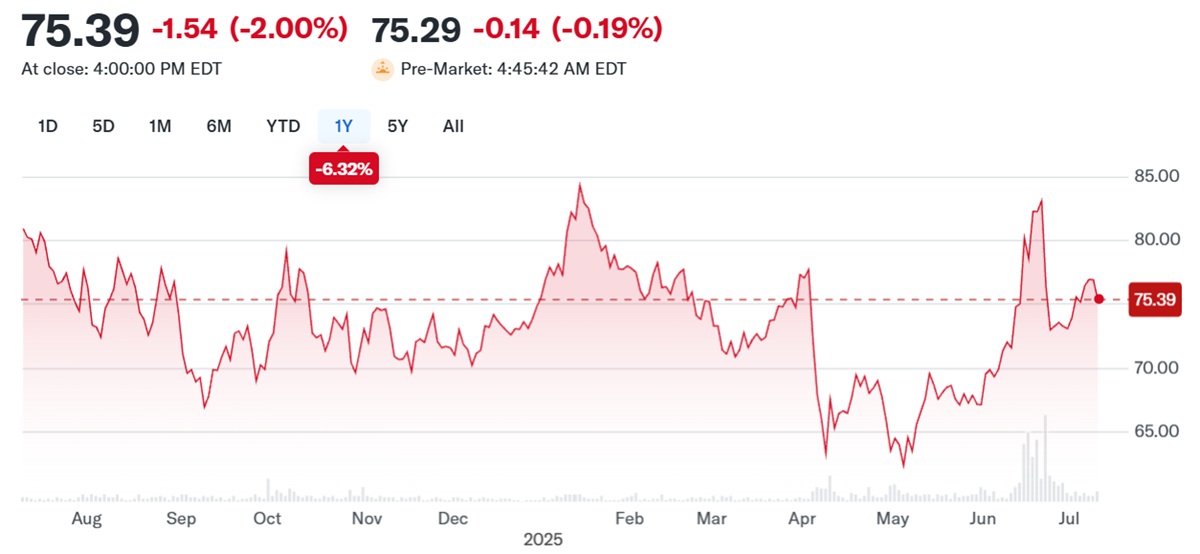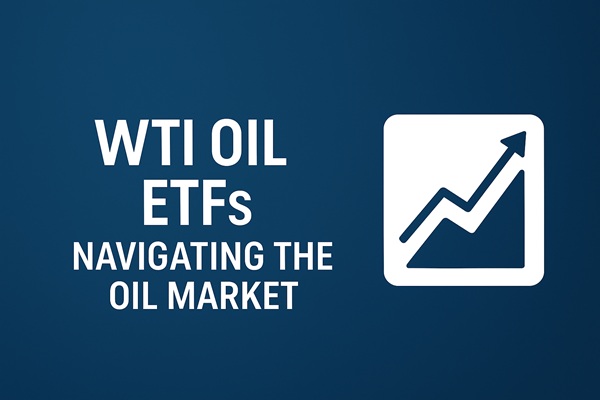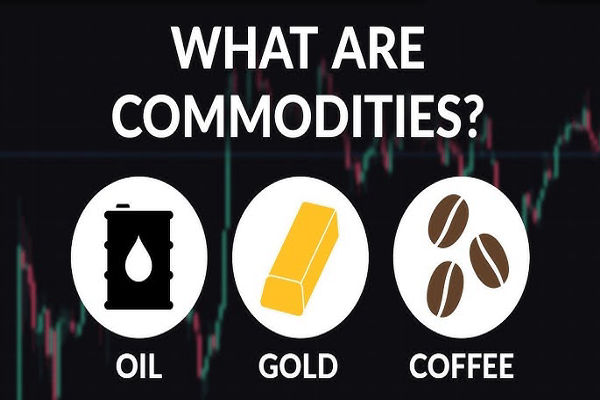Crude oil prices have long captured the attention of traders, economists, and everyday investors alike—fluctuating with geopolitical tensions, global demand shifts, and market speculation. For those looking to capitalise on these price movements without holding physical oil or navigating the complexities of futures trading, the United States Oil Fund (USO) has become a go-to instrument. Designed to reflect the daily changes in the price of West Texas Intermediate (WTI) crude, USO offers retail investors a way to gain oil exposure through a standard brokerage account. But its structure, strategy, and performance characteristics make it far from a simple mirror of the oil market.
USO Overview & Structure
 The United States Oil Fund (USO) is an ETF designed to offer investors exposure to movements in crude oil prices, specifically WTI crude, without having to directly trade oil futures themselves or hold physical oil. The fund was created and is managed by United States Commodity Funds LLC (USCF), a firm specialising in commodity-based investment products.
The United States Oil Fund (USO) is an ETF designed to offer investors exposure to movements in crude oil prices, specifically WTI crude, without having to directly trade oil futures themselves or hold physical oil. The fund was created and is managed by United States Commodity Funds LLC (USCF), a firm specialising in commodity-based investment products.
USO seeks to track, in percentage terms, the daily price movement of the front-month WTI crude oil futures contract traded on the New York Mercantile Exchange (NYMEX). This means it tries to reflect how the price of oil changes day to day, not necessarily over the long term.
Rather than physically storing oil, USO maintains exposure by buying and rolling oil futures contracts. This makes it a synthetic representation of oil prices, rather than a direct one.
History & Key Facts
 Launched on 10 April 2006. USO was one of the first commodity-based ETFs made available to everyday investors. It rapidly became popular among retail traders, particularly during periods of high oil price volatility, such as the 2008 financial crisis and the COVID-19 oil price crash of 2020.
Launched on 10 April 2006. USO was one of the first commodity-based ETFs made available to everyday investors. It rapidly became popular among retail traders, particularly during periods of high oil price volatility, such as the 2008 financial crisis and the COVID-19 oil price crash of 2020.
Some key facts include:
Ticker: USO
Issuer: United States Commodity Funds (USCF)
Exchange: NYSE Arca
Assets Under Management: Over $1 billion, though this fluctuates with market interest and oil price conditions
Structure: Limited Partnership, not a standard mutual fund or stock-based ETF
The legal structure means investors may receive Schedule K-1 tax forms, which can introduce additional reporting complexity.
Holdings & Strategy
Unlike stock ETFs, which hold shares in companies, USO holds WTI crude oil futures contracts. These are legally binding agreements to buy or sell a certain quantity of oil at a predetermined price on a set date in the future.
At any given time, USO typically holds:
Front-month futures contracts (i.e., the nearest-term contract to expiry)
Short-term US Treasury bills or cash equivalents
Occasionally longer-dated contracts, particularly when the oil market is in extreme contango or backwardation
The fund's strategy involves rolling futures contracts. For example, just before a front-month contract expires, USO will sell those contracts and buy the next month's contract to maintain exposure. This strategy is essential to its operation, but it introduces something called roll yield, which can either add to or subtract from the fund's performance depending on the state of the oil futures market.
Trading & Liquidity
USO is among the most actively traded commodity ETFs in the world. It has:
Daily trading volume in the millions of shares
Tight bid-ask spreads, making it relatively cost-effective to enter and exit positions
High liquidity, even for larger institutional investors
Its high visibility and tight correlation to oil price movements have made it a favourite for short-term traders, particularly during geopolitical or economic events that significantly move crude oil prices.
However, because of its futures-based nature, USO does not perfectly track the spot price of oil. The fund's value can diverge over time due to roll costs and other operational dynamics.
Key Takeaways
While the USO ETF offers an accessible way to participate in oil price movements, it is not without limitations. Some important points to remember include:
Short-term tool: USO is most suitable for short-term trading strategies, not long-term investment, due to the erosive effect of futures roll costs during periods of contango.
Not a direct proxy: The fund does not directly invest in physical crude oil or oil companies, and it may underperform oil spot prices in some conditions.
Tax implications: Because it is structured as a partnership, investors may face more complicated tax filings.
Market responsiveness: USO is highly sensitive to daily changes in WTI futures prices, making it an effective tool for tactical exposure to crude oil.
Conclusion
The USO ETF remains one of the most popular and widely recognised commodity ETFs in the market. For those seeking daily exposure to the price of oil, particularly West Texas Intermediate crude, it serves as a convenient vehicle. However, understanding its mechanics — including the use of futures contracts, the impact of roll yields, and the potential tax complications — is critical for anyone considering an investment.
For experienced traders with a short-term outlook, USO can be a powerful instrument. For long-term investors, however, alternative vehicles that more closely track physical oil or provide diversified energy exposure may be more appropriate.
Disclaimer: This material is for general information purposes only and is not intended as (and should not be considered to be) financial, investment or other advice on which reliance should be placed. No opinion given in the material constitutes a recommendation by EBC or the author that any particular investment, security, transaction or investment strategy is suitable for any specific person.



 The United States Oil Fund (USO) is an ETF designed to offer investors exposure to movements in crude oil prices, specifically WTI crude, without having to directly trade oil futures themselves or hold physical oil. The fund was created and is managed by United States Commodity Funds LLC (USCF), a firm specialising in commodity-based investment products.
The United States Oil Fund (USO) is an ETF designed to offer investors exposure to movements in crude oil prices, specifically WTI crude, without having to directly trade oil futures themselves or hold physical oil. The fund was created and is managed by United States Commodity Funds LLC (USCF), a firm specialising in commodity-based investment products. Launched on 10 April 2006. USO was one of the first commodity-based ETFs made available to everyday investors. It rapidly became popular among retail traders, particularly during periods of high oil price volatility, such as the 2008 financial crisis and the COVID-19 oil price crash of 2020.
Launched on 10 April 2006. USO was one of the first commodity-based ETFs made available to everyday investors. It rapidly became popular among retail traders, particularly during periods of high oil price volatility, such as the 2008 financial crisis and the COVID-19 oil price crash of 2020.

















